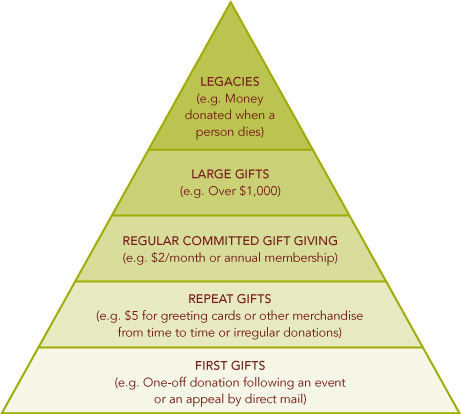Fundraising plan
Created: August 23, 2013 at 4:29 PM | Updated: September 1, 2020 | By Community Resource Kit
The most important step in successful fundraising is planning. Take time to draw up a fundraising plan and think through strategies that will achieve your goals. Break down tasks into manageable pieces and set a timeline for their completion.
1. First Steps
- Identify the purpose of obtaining funds.
- Check whether fundraising is really necessary. What's available now? Are there other ways of achieving what you want, such as using another group's equipment. Could you use a donation of a service or an item instead of money?
- Who will gain from the fundraising? Will your target group benefit?
2. Once you've decided to raise funds
- Establish a fundraising committee to provide you with support in the planning process. You might also want to appoint a fundraising coordinator to take overall responsibility for fundraising activities.
- Describe the exact purpose for raising funds. It can be much easier to raise funds for a particular project than for the everyday operating costs of the organisation. Make sure everyone knows the purpose of the fundraising and the target.
- Set a budget. Work out how much it will cost you to raise the funds e.g. running expenses such as salaries for professional help, rent, phone, power, printing, cleaning, stationery, transport, auditing, equipment, etc.
- Set goals. Work out how much money you need to raise and by when. Make sure the goals are meaningful and varied; raising funds for the same thing year after year can be demoralising.
- Build a fundraising pyramid (see diagram), this is a good formula for working out the types of donations (small, medium or major). People and funders give at varying levels, depending on their capacity, motivation and, most importantly, on how much they're asked for. In most successful campaigns, one third to half of income comes from large gifts and legacies, another third comes from medium-sized gifts, and the final third comes from smaller gifts. The trick to meeting your fundraising target is to decide what amount constitutes major, medium and small gifts, and how many gifts you need at each level of the pyramid.
Fundraising pyramid

Tip: If you ask for $10, that's what you'll get, even from a millionaire. So be bold and ask for a reasonable amount, though not too high or you might put people off altogether!
Remember to work the bottom of the pyramid by building a relationship with your one-off donors to encourage them to become regular donors. The top of the pyramid is also important because every large gift you get, means fewer small gifts you need to ask for.
- List the other (non-monetary) resources needed. Check these against the resources already available: people, equipment, transport, facilities etc.
- Build a fundraising team. Create a network of people who will join you in raising funds to maintain the energy and replace any who leave. Involve people who enjoy this type of work; those who don't can work in another part of the organisation.
- Decide who will need to be consulted before any decisions about the fundraising ventures are made. This will include your board.
- Evaluate and choose your funding options. Your group stands a better chance of long-term survival if you have as many sources of funding as you can manage, rather than just relying on one or two (see Funding Options below).
- Know how to account for any funding you might receive. This includes tax implications, keeping accurate records for your own organisation and for the funding organisation and/or donor (see Section 7 Financial Management).
- Develop your strategies, including a timeline, to put your final plan into action. Make sure these strategies fit into your overall income plan.
3. Now you're ready to ask for the money...